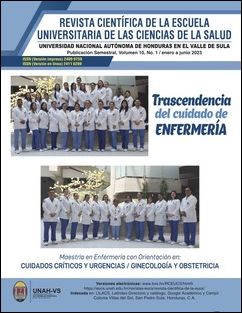Predictive tests of difficult airway and cormack- lehane classification in adults. ¿myth or reality?
DOI:
https://doi.org/10.5377/rceucs.v10i1.17589Keywords:
anesthesia, classification, intubationAbstract
Airway management is of concern for the anesthesiologist and it is their duty to anticipate difficulties in performing intubation. There are multiple tests to predict the difficult airway. Objective: To describe the results between the Mallampati scale, interincisor distance, sternomental distance and neck circumference and the Cormack- Lehane scale to anticipate a difficult airway. Patients and Methods: Quantitative, descriptive, cross-sectional study; The data was obtained through the application of a questionnaire at the Doctor Mario Catarino Rivas National Hospital. A total of 50 patients over 18 years of age. Results: On the Mallampati scale, 4 (44%) they were difficult intubation according to the results of Cormack-Lehane scale. In the opening greater than 3 cm, 32 (94%) were easy intubation. Of the patients with sternomental distance greater than 13 cm, 41 (89.1%) underwent easy intubation.In neck thickness less than or equal to 36 cm, 32 (94%) were easy intubation. Conclusion: When comparing the results of predictive tests for difficult airway and the Cormack-Lehane classification, it was found that the scales of Mallampati and mouth opening were similar with the Cormack-Lehane classification.
Downloads
294




